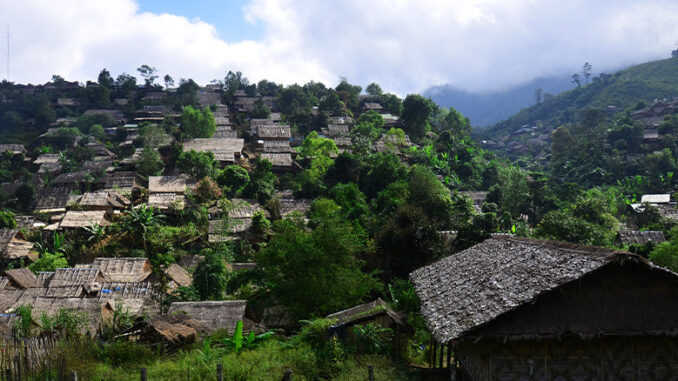
Researchers and practitioners from multiple disciplines gathered to learn about and discuss the situation in the Thai-Myanmar border region during the 47th Southeast Asia Seminar. Field trips to several locations in Tak Province, Thailand generated ideas about what research can be further pursued by positivist International Relations (IR) studies that address security related questions. Based on insights from the Seminar, I propose a fresh focus on the inhabitants of borderlands as agents who exercise and/or pursue power (Morgenthau, 2006; Wendt, 1987).
Agency in Positivist IR Research: The Significance of Borderlands and their Peoples
Unlike the Southeast Asia Seminar, which investigated marginalized peoples living in the borderlands using transdisciplinary approaches (Pohl et al., 2021), 1 positivist IR, or IR research that emphasizes the empirical testing of specific theories and hypotheses, rarely considers marginalized peoples. Rather, such studies are traditionally centered on international or state level actors and variables (Gourevitch, 1978; Waltz, 1954; 1979). Indeed, individuals at the margins are seen as the least influential agents in the Westphalian system. However, the recent rise in IR research on “borders” as geographical infrastructure alludes to their relevance to international order and statehood. Among some agenda-setting studies on border and sovereign control or war and conflict (e.g., Simmons, 2019; Simmons & Goemans, 2021), the arguments of Carter and Poast (2017; 2020) on the economic effects of physical border walls has sparked momentum for data creation. In recent years, global datasets have been created on authoritative displays of border (Simmons & Kenwick, 2022) and highways that allow border crossings (Kenwick et al., 2023). Although such studies and datasets help explain the orientation of border policies, or causal relationships in domestic conflicts, they have yet to decipher the impacts and dynamics of the people that cross those borders and/or live in borderland regions.
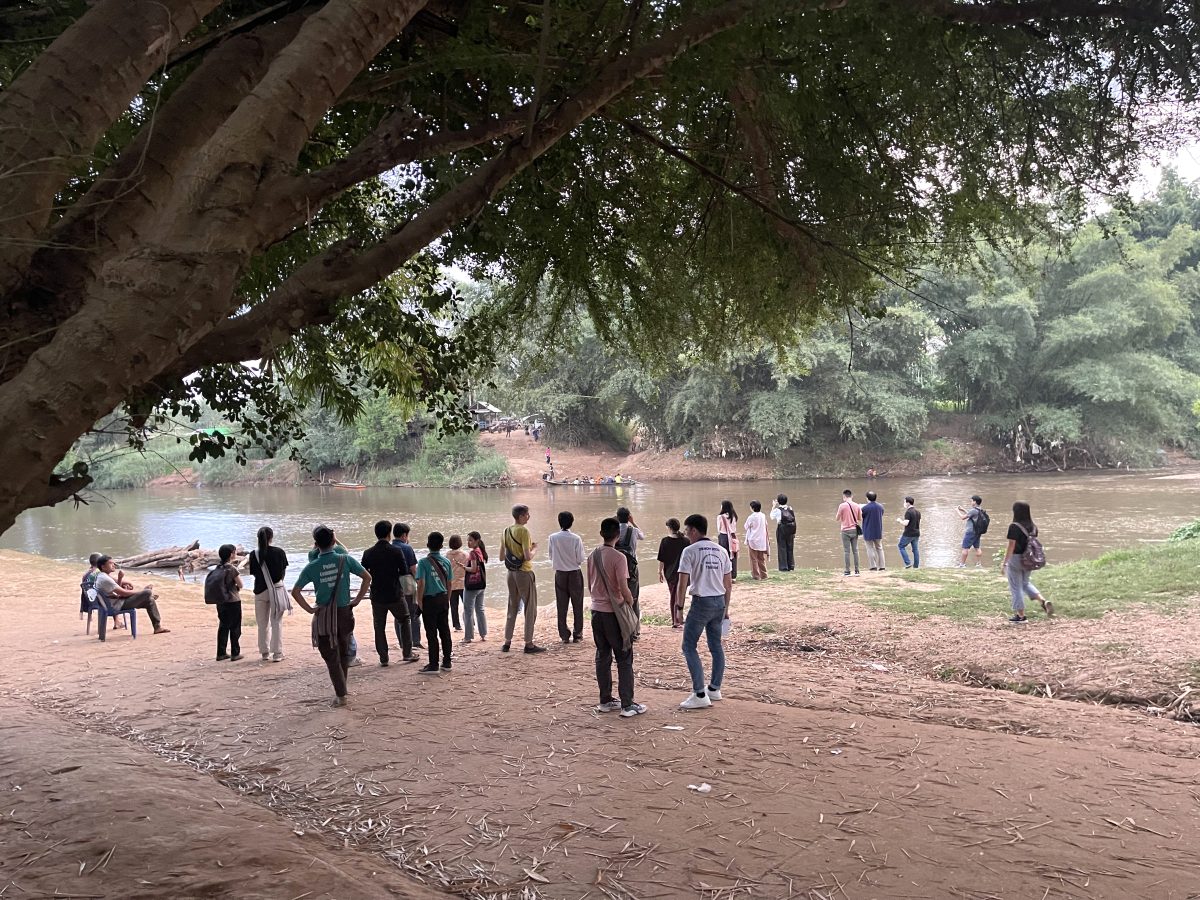
The Agency of Migrants in Borderland Politics
Social anthropologists and relevant field researchers who previously emphasized the marginalized status of peoples in borderlands (e.g., Tangseefa, 2003) have moved beyond this viewpoint to focus on their agency (e.g., Horstmann & Wadley, 2006). This is done in part by disentangling their voices in the intricate relations between knowledge production and nation-states (Tangseefa, 2006; 2007; 2010). While reflexive IR researchers/ anthropologists emphasize such agency in cultural and socio-economic spheres, I attempt here, from a positivist IR standpoint, to elucidate agency in politics (which has security-related consequences). In other words, I attempt to decipher networks and identity formation that can lead to societal movements and change of order. During the Seminar, we interviewed people from Karen and Muslim communities from Myanmar. Although they were marginalized in many ways, they presented proactive ways through which they were not only surviving, but also exerting political agency.
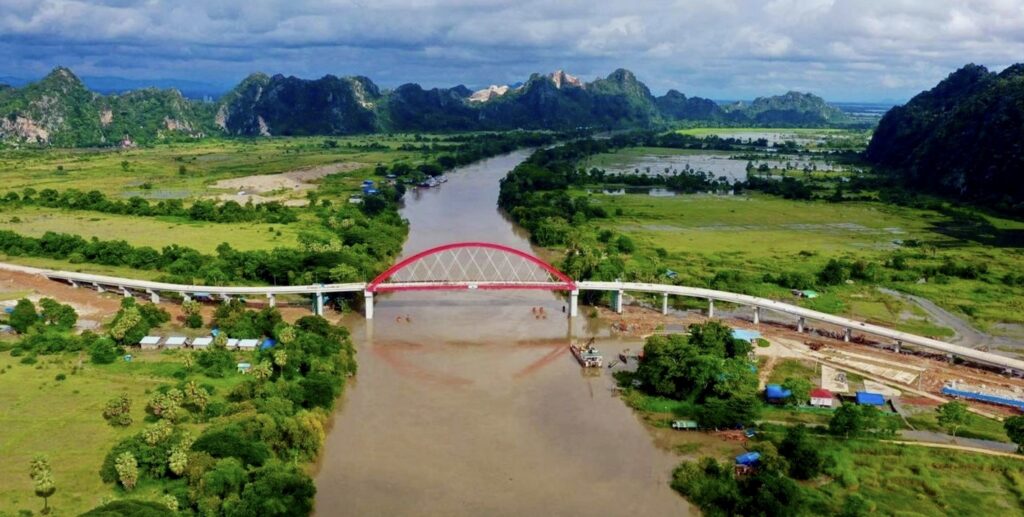
Surviving without Status and Building Transnational Connection
The first example comes from an interview with a couple from Myanmar with five children. When we met them, they were living in a prefabricated house next to two Muslim neighborhoods and a cattle market in a Thai village after having fled from Mon State in April 2023. Their living conditions seemed far from decent: the wife kept brushing off flies as she breast-fed her one-and-a-half-year-old baby, chickens roamed both inside and outside the house, and a girl was fetching water from a well in a field scattered with cattle excrement. As represented by their insistence that the hot temperature was “completely fine” for them compared to their escape through the jungle with terrible rain, their life since crossing the border had been steered by their very own hands.
The family had been forced to flee because the husband belonged to the Karen National Defense Organization army, which opposed the incumbent junta in Myanmar. In narrating their two-month journey, the wife emphasized how they despised the military in Myanmar, but was nonchalant about the nationalities, ethnicities, or religions of their friends, who provided them with survival tips. Although “marginalization” deprived them of basic services provided to citizens, such as schooling, healthcare, and legal labor options, their life was sustained by a network of aligned community members.
Moreover, they followed the latest news and kept in contact with those in Myanmar through their Huawei mobile phone. Aside from a Thai SIM card, which came from a shop that did not request any identification, they continued to also use a Myanmar SIM card because they were close enough to the border for it to work. This enabled them to invite former fellow soldiers into the transnational Civil Disobedience Movement. The family was actively participating in the movement with the help of a Christian pastor in Yangon, who travelled to see them occasionally with donations of rice and other food. In other words, despite their lack of legal status in Thailand or security in Myanmar, they used transnational personal ties to survive, and even leveraged their geographical location to prepare for future societal movements.
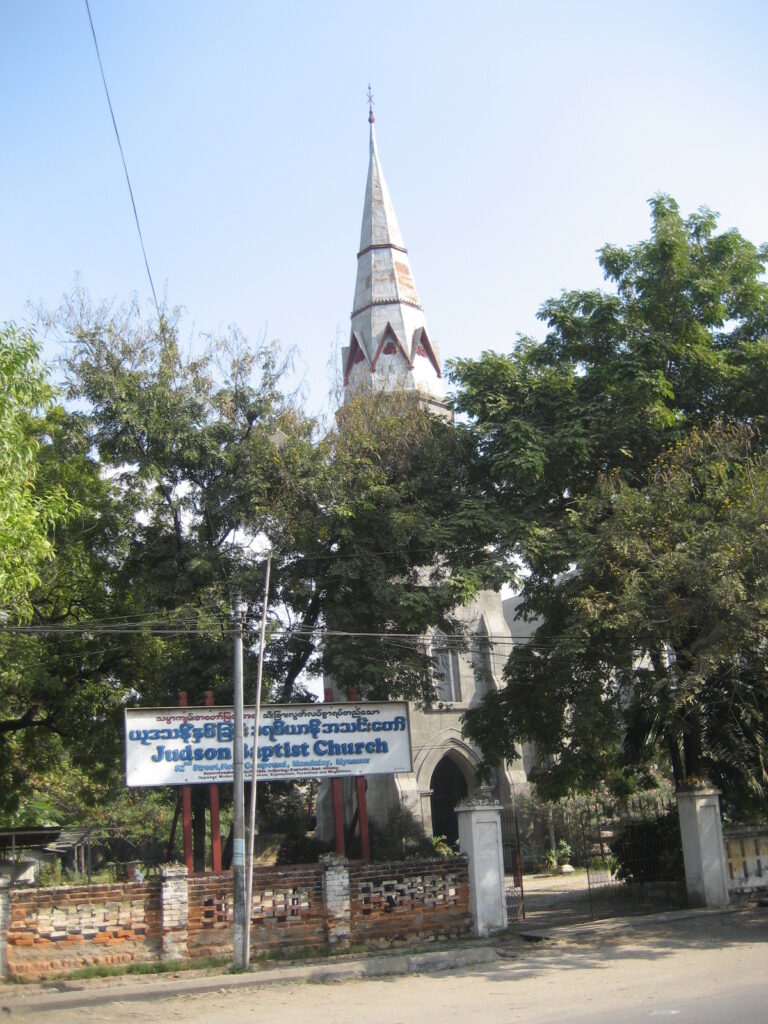
Christianity, Karen “Nationalism,” and the Thai Government Align
The second example of survival and political agency comes from a compilation of different interviews in separate locations. Firstly, we visited an area next to the Mae La “temporary shelter area” organized by the Ministry of Interior of the Thai government, where the largely Karen population has been marginalized since long before the political turmoil in 2021 due to their ethnic minority status. The people we talked with were not only marginalized in Myanmar, but also in Thailand, as the country does not have an official asylum system. 2 In line with the first example, such circumstances resulted in the denial of official permission and opportunities regarding work, education, and healthcare outside the shelter area. This is why some resorted to sneaking out of the shelter area in search of day labor and some sent children to the Kawthoolei Karen Baptist Bible School and College (KKBBSC). Additionally, the Seminar co-organizer, the Shoklo Malaria Research Unit (SMRU), is actively engaged in research and humanitarian efforts to combat prevalent diseases like malaria and tuberculosis (SMRU Website).
Despite the survival challenges, some of those we talked with expressed proactive attitudes regarding their everyday lives and future prospects. A twenty-four year-old student, who was both teaching small children and studying himself in the shelter area, opened up about being bullied back in a Myanmar school due to his congenital disability. He then described his conversion from Buddhism to Christianity in his current school, where he felt welcomed. This was emphasized by his description of a spiritual episode in which he saw a “flame burning his textbook.” While he did not have a strong national identity, he hoped to lead the school and exposed antagonism against Muslim residents, who allegedly dumped garbage in the river and sold high-priced goods to the community. Thus, the “temporary shelter area,” although officially “temporal,” is a hub where long-term community building (Tangseefa, 2007; 2016), including religious ones, can take place.
As we witnessed, Christian education dovetails with the foundation of a specific “Karen” identity at the Thoo Mweh Khee Migrant Learning Center (TMK). Karens are diverse in ethnicity and religion (Tangseefa, 2019), but the narrative in the school attached being “Karen” to a specific Christian tradition. In reply to my question on the prioritization between “Karen culture” formation and Thai language skills, the American faculty members stressed the former while acknowledging modern needs. A Pwo Karen teacher recalled her own days as a student, when “Karen” new year and dress were emphasized over Thai uniforms, she was not very motivated to learn the Thai language, and she converted to become a Karen Baptist from formerly being a Buddhist. According to the English teacher, who spoke Pwo Karen, she was not “forced” but still felt “required to” go to church, as the church helped to fund the school. Christian missionaries and the “Karen” community appeared to be mutually reinforcing their advancement in the lacuna left by the nation-state system.

Seminar participants also visited the Karen Refugee Committee (KRC), which was internally elected by people from all the shelter areas but whose office was not located in a shelter area. According to one of the leaders, who spoke clear English, KRC is not registered as a Thai legal entity, but it is indirectly endorsed and even desired by the Thai government, as it is too costly for an “external” authority to manage the shelter areas. While serious crimes such as murder must be reported to the Thai justice system with a registered lawyer, shelter residents can detain those that commit a minor crime within the shelter area and proceed with “local solutions for the local community.” A moderate level of unity among the Karens is welcomed by the Thai government, which does not want to meddle with those who it officially designates as “temporary residents.”
Furthermore, KRC explained how the Thai government avoids costly procedures when detaining illegal migrants. According to the KRC, when shelter residents are caught wandering outside the shelter area without official permission, the Thai police are supposed to take them to the police station. However, in reality, the police often “dump” the migrants at the border, where they are supposed to cross back to Myanmar. This allows them to return again later.
Although I have not gathered other evidence to cross-check the story, these interviews indicate a mutually re-enforcing momentum of Christianity, “Karen” nationality, and Thailand’s approach as a host government. As the Karens lean on religious and ethnic identity formation and unity to govern themselves in “temporary shelter areas,” Thailand is satisfied not to get too entangled in the complexity of the so-called “refugee policies,” which could trigger condemnations against the government in international humanitarian or human rights arenas. Ultimately, this momentum strengthens the political agency of the Karens living in the borderland.
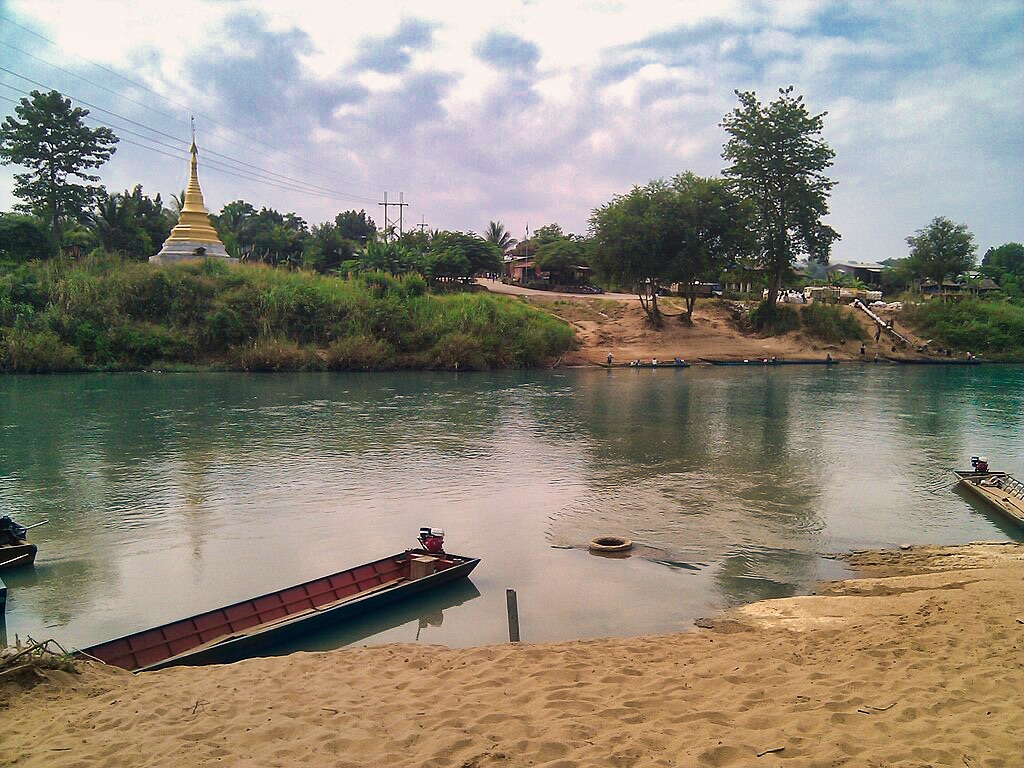
Conclusion
Rather than the “border” as a mere delineating line (Simmons, 2019), both examples showcase the significance of considering a “borderland” as an inhabited space where people are not simply “marginalized,” but proactive in their new lives. Although it may sound counter-intuitive, when people are marginalized as a group, they seek space for their own belonging, which can activate social, religious, or ethnic movements. Furthermore, like Thailand, host governments that may not want to officially acknowledge the marginalization of people migrating from a neighboring country, they may welcome unity and forms of “soft autonomy” among such communities.
To be clear, this essay does not wish to deny or downplay the marginalization of borderland peoples; rather, their proactive attitudes may stem from a determination to stay strong in difficult circumstances. For example, a Muslim Imam and a KKBBSC teacher respectively expressed dim hope that their children would likely only grow up to become community leaders at best. However, another exogenous political turn-around in Myanmar could change their status altogether, with migrant networks and “flames” of political agency igniting societal change.
This potential is currently overlooked in IR studies because both quantification and theorization of migrants are challenging. Although satellite images can be used to identify border structures (Kenwick et al., 2023), borderland organizations such as the Mae Tao Clinic and KRC struggle to keep track of births and deaths in temporary shelter areas, let alone identity formation and political agency. However, as nearly 25 percent of the global population was living in borderlands as of 2016 (Simmons, 2019), such peoples should not be dismissed even from a positivist IR point-of-view, which would benefit from considering them not only as numbers, but also as fundamental actors.
Tomoko Takahashi
Kyoto University
Banner: Housing Karen refugees from Myanmar on mountain and forest at Phop Phra District in Tak, Thailand. Photo, Anirut Thailand, Shutterstock
Notes:
- During field trips, seminar participants conducted unstructured group interviews with individuals in Tha Song Yang, Mae Ramat, Mae Sot, and Phop Phra of Tak province, Thailand. Groups of four to five researchers randomly asked questions according to their interests, with some questions triggering further conversations. The interviewee was accompanied by a translator if they did not speak English. ↩
- This is the case although some asylum seekers can register for refugee documents (see UNHCR Website) in Thailand. ↩
